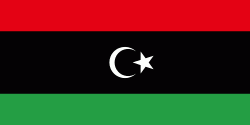Al Butnan District (Al Buţnān)
In the north, Butnan has a shoreline on the Mediterranean Sea. To the east, it borders Egypt's Matruh Governorate, along with a small border on the Al Wadi al Jadid Governorate in the far southeast. Domestically, it borders Derna in the northwest and Al Wahat in west and south. The most important settlements are Tobruk, Jaghbub and Bardia.
Per the census of 2012, the total population in the region was 157,747 with 150,353 Libyans. The average size of the household in the district was 6.9, while the average household size of non-Libyans being 3.7. There were totally 22,713 in the district and the population density of the district was 1.86 persons per sq. km. Per 2006 census, there were totally 50,154 economically active people in the district.
Traditionally part of Marmarica, and later part of the province of Cyrenaica in Italian Libya, with the division of Libya into ten governorates in 1963, Al Butnan became part of the Darnah Governorate. In 1983 the Darnah Governorate was divided into a number of baladiyat (districts), with what is now Butnan being included in the Tobruk baladiyah and others. Butnan District was created in 1988 as one of the twenty-five reorganized baladiyat. In 1995, Butnan was one of the thirteen new shabiyah, and Butnan retained its status through the reorganizations of 1998, 2001 and 2007.
Map - Al Butnan District (Al Buţnān)
Map
Country - Libya
 |
 |
| Flag of Libya | |
Libya has been inhabited by Berbers since the late Bronze Age as descendants from Iberomaurusian and Capsian cultures. In classical antiquity, the Phoenicians established city-states and trading posts in western Libya, while several Greek cities were established in the East. Parts of Libya were variously ruled by Carthaginians, Persians, and Greeks before the entire region becoming a part of the Roman Empire. Libya was an early center of Christianity. After the fall of the Western Roman Empire, the area of Libya was mostly occupied by the Vandals until the 7th century when invasions brought Islam to the region. In the 16th century, the Spanish Empire and the Knights of St John occupied Tripoli until Ottoman rule began in 1551. Libya was involved in the Barbary Wars of the 18th and 19th centuries. Ottoman rule continued until the Italo-Turkish War, which resulted in the Italian occupation of Libya and the establishment of two colonies, Italian Tripolitania and Italian Cyrenaica (1911–1934), later unified in the Italian Libya colony from 1934 to 1943.
Currency / Language
| ISO | Currency | Symbol | Significant figures |
|---|---|---|---|
| LYD | Libyan dinar | لد | 3 |
| ISO | Language |
|---|---|
| AR | Arabic language |
| EN | English language |
| IT | Italian language |















